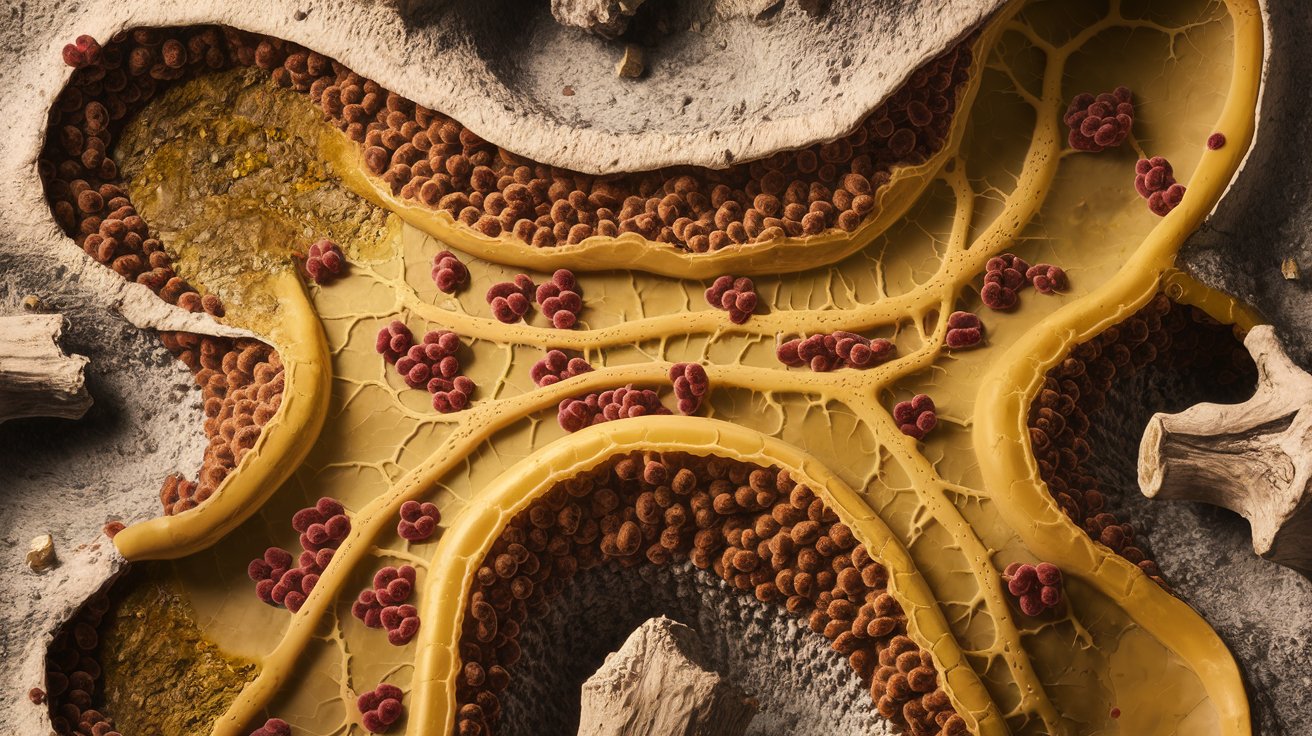
Panmyelophthisis Aplastic Anemia is a rare but serious condition where the bone marrow fails to produce enough blood cells. This can lead to fatigue, infections, and uncontrolled bleeding. Understanding this illness is crucial for those affected and their loved ones. In this blog post, we will share 25 facts about Panmyelophthisis Aplastic Anemia to help you grasp its complexities. From symptoms and causes to treatments and lifestyle tips, we aim to provide a comprehensive overview. Whether you're a patient, caregiver, or just curious, these facts will offer valuable insights into managing and living with this challenging condition.
Key Takeaways:
- Panmyelophthisis Aplastic Anemia is a rare blood disorder causing low blood cell counts. It can be caused by genetic mutations, toxic chemicals, medications, viral infections, and autoimmune disorders.
- Symptoms include fatigue, infections, bruising, and shortness of breath. Treatment options include blood transfusions, bone marrow transplants, immunosuppressive therapy, growth factors, and antibiotics.
What is Panmyelophthisis Aplastic Anemia?
Panmyelophthisis Aplastic Anemia is a rare and serious blood disorder. It affects the bone marrow's ability to produce blood cells. Understanding this condition can help in recognizing its symptoms and seeking timely treatment.
- Panmyelophthisis Aplastic Anemia is characterized by the bone marrow's failure to produce enough blood cells.
- This condition can lead to pancytopenia, a deficiency of all three blood cell types: red cells, white cells, and platelets.
- The term "panmyelophthisis" refers to the wasting away or destruction of bone marrow.
- Aplastic anemia means the bone marrow is not producing sufficient new cells to replenish blood cells.
Causes of Panmyelophthisis Aplastic Anemia
Understanding the causes can help in identifying risk factors and potential preventive measures. Various factors can lead to this condition.
- Genetic mutations can be a cause, making some people more susceptible to developing this disorder.
- Exposure to toxic chemicals, such as benzene, can damage bone marrow and lead to aplastic anemia.
- Certain medications, including chemotherapy drugs, can also cause bone marrow failure.
- Viral infections, like hepatitis, Epstein-Barr, and HIV, have been linked to the development of this condition.
- Autoimmune disorders can cause the body's immune system to attack its own bone marrow.
Symptoms of Panmyelophthisis Aplastic Anemia
Recognizing the symptoms early can lead to prompt diagnosis and treatment. Symptoms can vary but often include signs of low blood cell counts.
- Fatigue and weakness are common due to low red blood cell counts.
- Frequent infections can occur because of a shortage of white blood cells.
- Easy bruising and bleeding can happen due to low platelet counts.
- Shortness of breath may be experienced, especially during physical activity.
- Pale skin is another symptom, resulting from anemia.
Diagnosis of Panmyelophthisis Aplastic Anemia
Accurate diagnosis is crucial for effective treatment. Various tests and procedures are used to diagnose this condition.
- A complete blood count (CBC) test is often the first step in diagnosing aplastic anemia.
- Bone marrow biopsy is performed to examine the bone marrow directly.
- Flow cytometry can help identify specific types of blood cells and their characteristics.
- Genetic testing may be done to identify any underlying genetic causes.
- Imaging tests, like X-rays or CT scans, might be used to rule out other conditions.
Treatment Options for Panmyelophthisis Aplastic Anemia
Several treatment options are available, depending on the severity and underlying cause of the condition. Early treatment can improve outcomes.
- Blood transfusions can provide temporary relief by increasing blood cell counts.
- Bone marrow transplants offer a potential cure by replacing damaged marrow with healthy donor marrow.
- Immunosuppressive therapy can help if the condition is caused by an autoimmune disorder.
- Growth factors may be used to stimulate the bone marrow to produce more blood cells.
- Antibiotics and antivirals are often prescribed to prevent or treat infections.
Prognosis and Living with Panmyelophthisis Aplastic Anemia
Living with this condition requires ongoing medical care and lifestyle adjustments. Understanding the prognosis can help patients and families prepare.
- The prognosis varies widely, depending on the cause and response to treatment. Some patients may achieve full recovery, while others may need long-term care.
Final Thoughts on Panmyelophthisis Aplastic Anemia
Panmyelophthisis Aplastic Anemia is a rare but serious condition affecting the bone marrow's ability to produce blood cells. Understanding its symptoms, causes, and treatments can help those affected manage their health better. Early diagnosis and medical intervention are crucial for improving outcomes. Treatments like blood transfusions, medications, and bone marrow transplants offer hope for many patients. Awareness and education about this condition can lead to better support systems and resources for those in need. If you or someone you know shows symptoms, consult a healthcare professional promptly. Knowledge is power, and staying informed can make a significant difference in managing this challenging illness. Stay proactive, seek medical advice, and support research efforts to find better treatments and, hopefully, a cure.
Frequently Asked Questions
Was this page helpful?
Our commitment to delivering trustworthy and engaging content is at the heart of what we do. Each fact on our site is contributed by real users like you, bringing a wealth of diverse insights and information. To ensure the highest standards of accuracy and reliability, our dedicated editors meticulously review each submission. This process guarantees that the facts we share are not only fascinating but also credible. Trust in our commitment to quality and authenticity as you explore and learn with us.
